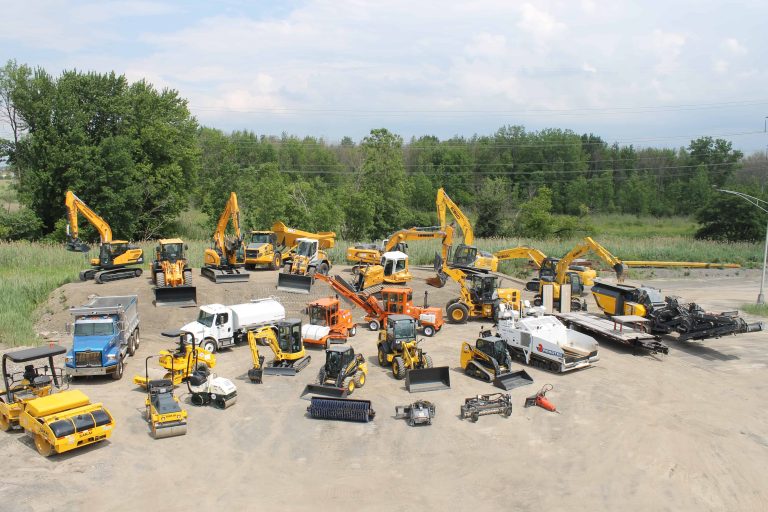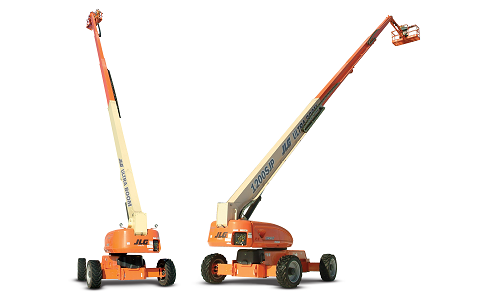Mini Excavator Rental: Compact Machines for Strict Spaces
Mini Excavator Rental: Compact Machines for Strict Spaces
Blog Article
Maximize Your Budget Plan by Understanding the Expenses Associated With Building And Construction Tools Services
Comprehending the complete scope of costs connected with construction devices services is vital for optimizing your budget plan. What techniques can be utilized to efficiently manage these costs and guarantee a more reliable rental experience?
Summary of Rental Expenses
When taking into consideration building and construction equipment leasings, understanding the associated expenses is vital for reliable budgeting and job preparation. Rental prices can vary dramatically based upon a number of factors, consisting of equipment type, period of service, and place. The first rental cost often shows the tools's market demand and its connected operational abilities, influencing the general expense.
Along with the base rental price, supplementary expenses may arise, such as transport fees, fuel surcharges, and maintenance costs. It is important to represent these added expenditures to precisely examine the complete expense of leasing tools. The rental duration can influence pricing; longer leasings might certify for discounted rates, while short-term leasings could sustain higher daily fees.

Break Down of Rental Rates
A thorough understanding of rental rates is crucial for service providers and project managers aiming to enhance their budgets. Rental rates for building devices typically contain several components, consisting of base prices, time-based costs, and use costs.
Base prices are the core fees connected with the leasing of the equipment, frequently identified by the type and dimension of the equipment. These rates can vary considerably, influenced by factors such as tools need, schedule, and local market fads. Time-based costs, which may be daily, weekly, or monthly, serve to suit various job timelines and rental durations.
Additionally, rental rates may consist of use costs, which are suitable when devices is utilized past a defined threshold, guaranteeing that the rental company can account for damage. Seasonal need fluctuations can also impact rental rates, with peak building and construction seasons generally commanding higher rates.
In addition, understanding the rental firm's policies pertaining to maintenance and insurance policy can supply further insight right into the general price structure. By assessing these elements, contractors can make educated choices, guaranteeing the option of rental equipment straightens with both project demands and spending plan restrictions.
Additional Charges to Take Into Consideration
Understanding the complexities of extra costs is essential for specialists to handle their overall leasing expenditures effectively. Beyond the conventional rental prices, different extra charges can substantially influence the total expense of tools leasing. These costs typically consist of delivery and pick-up charges, which can vary based upon distance and logistics entailed in carrying the equipment to and from the task website.
In addition, some rental business might impose fuel additional charges if the tools is returned with less fuel than when rented. It is also vital to be conscious of possible cleansing charges, especially for specific devices that needs complete upkeep after use.

Completely evaluating the rental agreement and clarifying these added costs ahead of time can aid contractors make certain official source and prevent unforeseen prices that spending plans remain undamaged throughout the job lifecycle.
Maintenance and Fixing Costs
Regular upkeep and repair service costs are typically neglected variables that can substantially affect the general cost of building and construction equipment services. When renting tools, it is essential to take into consideration not only the rental costs but likewise the potential expenses connected with keeping the equipment in optimum operating condition.
Several rental companies consist of standard maintenance as component of the rental agreement; nevertheless, extra unexpected malfunctions or extensive repair work can bring about additional costs. It's necessary to examine the rental agreement thoroughly to understand what upkeep solutions are covered and what obligations drop on the occupant.
Additionally, tools that is not properly maintained can bring about inadequacies on the task website, possibly creating delays and increasing job expenses. To minimize these dangers, it is advisable to conduct normal assessments and preserve open interaction with the rental copyright regarding any issues that emerge during use.
Insurance Coverage and Obligation Expenses
Insurance coverage and obligation prices are critical components that can significantly impact the general expenditure of construction equipment leasings (dozer rental). These expenses make sure that both the rental firm and the customer are shielded from potential financial losses arising from crashes, damage, or burglary throughout the rental duration

Furthermore, customers ought to recognize any kind of deductibles or exemptions in the insurance plan, as these can influence possible out-of-pocket costs. Understanding the terms and problems of any type of insurance coverage is vital to prevent unanticipated expenses. Inevitably, budgeting for insurance coverage and responsibility costs can aid ensure a smoother rental experience and secure against monetary threats associated with building and construction projects.
Final Thought
In conclusion, a detailed understanding of the expenses linked with construction equipment services is essential for effective spending plan monitoring. Ultimately, notified decision-making pertaining to tools rentals contributes to the total success of building and construction this content undertakings.
Rental expenses can vary significantly based on several variables, consisting of devices type, period of rental, and place (boom lift rental). The rental duration can affect rates; longer rentals might qualify for discounted prices, while temporary image source leasings might sustain higher day-to-day fees
By carrying out thorough study and engaging with trusted rental companies, specialists can efficiently browse the complexities of rental rates, eventually optimizing their monetary resources.
Past the basic rental prices, various auxiliary fees can dramatically affect the complete expense of tools rental. Rental business frequently give obligation insurance policy that covers injuries to third events or damage to property, while devices damages insurance coverage can cover the price of repair services or substitute if the rented tools is damaged.
Report this page